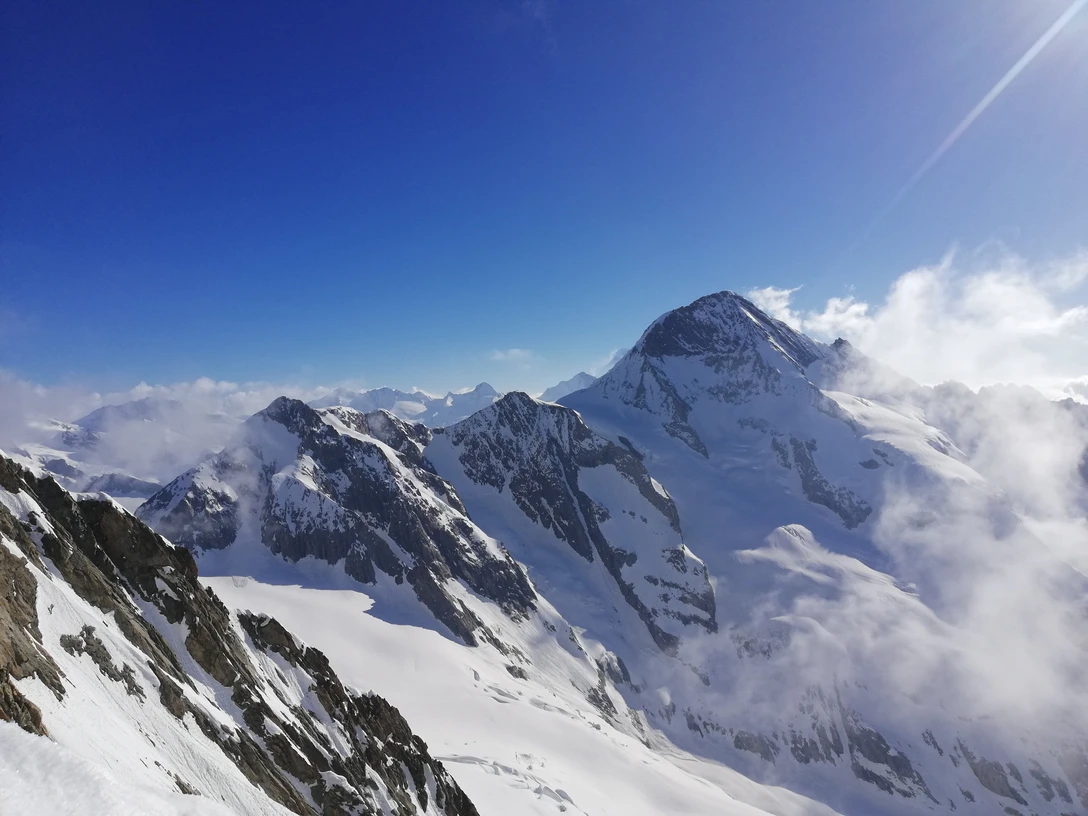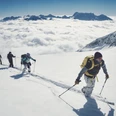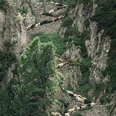The first ascent of the Aletschhorn took place on June 18, 1859. It was successfully accomplished by the Englishman Francis Fox Tuckett along with the mountain guides Johann Josef Benet, Peter Bohren, and Victor Tairraz.
Glacier Feedings
After the Finsteraarhorn, the Aletschhorn is the second highest elevation in the Bernese Alps massif. On its northern flank lies the Great Aletsch Glacier. Additionally, the Aletschhorn is the origin of both the Upper Aletsch Glacier and the Middle Aletsch Glacier. Due to its exposed location and susceptibility to strong winds, the Aletschhorn is considered the coldest mountain in the Alps.
An Upside-Down Mountain
Geologically speaking, the Aletschhorn literally turns the world upside down: The summit consists of much older ancient crystalline rock lying on top of the younger Central Aare Granite. While the southern schist cover of ancient crystalline rock is between 1.2 and 2 billion years old, the young Aare Granite is about 300 million years old.
Ascent to the Aletschhorn
Although the normal routes are technically relatively straightforward, the overall tour is very long and challenging, especially in poor visibility at the summit. The shortest and technically easiest route is from the Mittelaletsch bivouac via the Northeast Ridge. However, in summer, the Southwest Ridge, which starts from the Oberaletsch Hut, is the most frequently used route. This route is more demanding than the Northeast Ridge and significantly longer.
Guided tours to the Aletschhorn
The demanding high-altitude tour in the heart of the UNESCO World Heritage site Swiss Alps Jungfrau-Aletsch can, of course, also be undertaken with the accompaniment of an experienced mountain guide.
Contact:
For more information on the offerings of the BelalpAlpinCenter, please click here.
BelalpAlpinCenter
3914 Blatten bei Naters
Tel. +41 77 423 08 08
info@belalpalpincenter.ch
www.belalpalpincenter.ch
Good to know
Openings
General information
Parking Available
Bus stop available
Directions & Parking facilities
From Western Switzerland: A9 Lausanne - Vevey, or Northwestern Switzerland: A12 Bern - Vevey: A9 - Sierre: Main road Sierre - Brig
From Northwestern Switzerland: A6 Bern - Thun - Spiez: Main road Spiez - Kandersteg (car shuttle Lötschberg Tunnel) - Goppenstein - Gampel - Brig
From Eastern and Central Switzerland: Andermatt - Realp (year-round car shuttle Furka; in summer via Furka Pass) - Oberwald - Brig
From Ticino (in summer): Airolo - Nufenen Pass - Ulrichen – Brig
Or via Centovalli – Domodossola – Simplon Pass – Brig
From Italy (Aosta, Mt. Blanc Tunnel): Aosta - Grand Saint Bernard Tunnel (in summer via the pass) - Martigny: A9 Motorway - Sierre: Main road Sierre – Brig
Or via Domodossola – Simplon Pass – Brig
Blatten bei Naters
From Brig, you can reach Blatten bei Naters via Naters, and then take the cable car to the car-free Belalp.
Arrival by Public Transport
Blatten-Belalp is very easy and convenient to reach by train to Brig. From Brig, continue by post bus (624) to Blatten bei Naters, Luftseilbahn.
From here, after a short transfer time, you can take the cable car or gondola to the car-free Belalp.
Please note that the Swiss Travel Pass (GA) is valid year-round on SBB routes and the cable car Blatten-Belalp.
Contact person
License (master data)
Blatten-Belalp Tourismus AG
Nearby




